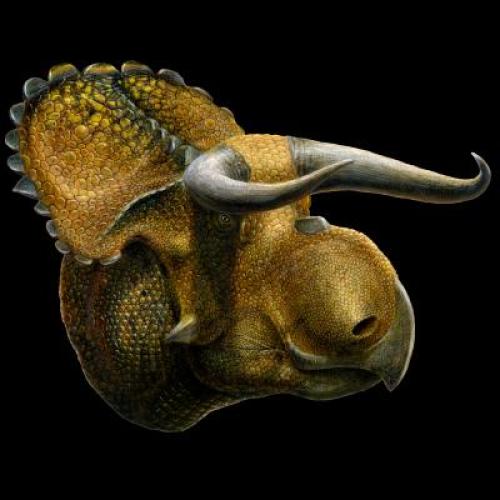New Dinosaur Species Announced With What Some Scientists Are Calling a “Jumbo-Sized Schnoz”
Clever Girl

A new type of nose has been discovered in Grand Staircase-Escalante National Monument in Utah, with a dinosaur attached to it. Nasutoceratops titusi was announced today as a new dinosaur that lived during the Late Cretaceous period. If Nasutoceratops titusi looks familiar, it could be because the species belongs to the same family as Triceratops, and shares the dual horns above the eyes, nose horn, and bony frill with the more famous genus. However, Nasutoceratops is gaining attention not only for its freshman status but for its nose, which is quite a bit bigger than that of other, related dinosaurs.
Nasuctoeratops titusi lived in what is now Utah, but was a swampy, subtropical portion of the Late Cretaceous continent known as Laramidia. The species not only has a larger than norman nose, but exceptionally long horns that curve over its eyes. Scientists studying the new species have hypothesized that the horns were used, like those of rams and deer today, to compete for mates and show off to the opposite sex. Study co-author Matt Loewen outlined the possible reason for the large over-eye horns, explaining that,
The amazing horns of Nasutoceratops were most likely used as visual signals of dominance and, when that wasn’t enough, as weapons for combatting rivals.
Meanwhile, the large nose has scientists more perplexed. The authors of the study do not believe that the sizable snout functioned for a better sense of smell. The study’s lead author, and the Chief Curator of Natural History Museum of Utah, Scott Sampson, explained the uncertainty behind the function of the large nose.
The jumbo-sized schnoz of Nasutoceratops likely had nothing to do with a heightened sense of smell — since olfactory receptors occur further back in the head, adjacent to the brain — and the function of this bizarre feature remains uncertain.
According to another co-author of the study, Andrew Fark, a large and diverse number of Ceratopsid dinosaurs have recently been discovered in the same area that constitutes Laramidia. Nasutocertops titusi joins other species in making the Ceratopsidae family the most diverse dinosaur family in Laramidia, a continent that was about the size of Australia.
Nasutoceratops refers to the “big-nosed horned face” of the genus, while the species name references Grand Staircase-Escalante National Monument paleontologist Alan Titus. The dinosaur is estimated to have weighed in at 2.5 tonnes, was 15 feet long, and is most closely related to Avaceratops. Beyond its status as a new species of dinosaur, Nasutoceratops titusi is also notable for supporting the hypothesis that there were “distinct northern and southern dinosaur communities” on Laramidia during the Late Cretaceous period. Now that Nasutoceratops is adding to our scientific knowledge though, it would be wonderful to see the new dinosaur make it to the big time. Can we please see that nose in Pixar’s dinosaur movie or Jurassic Park 4?
(via Geekosystem, University of Utah News Center)
Are you following The Mary Sue on Twitter, Facebook, Tumblr, Pinterest, & Google +?
Have a tip we should know? [email protected]